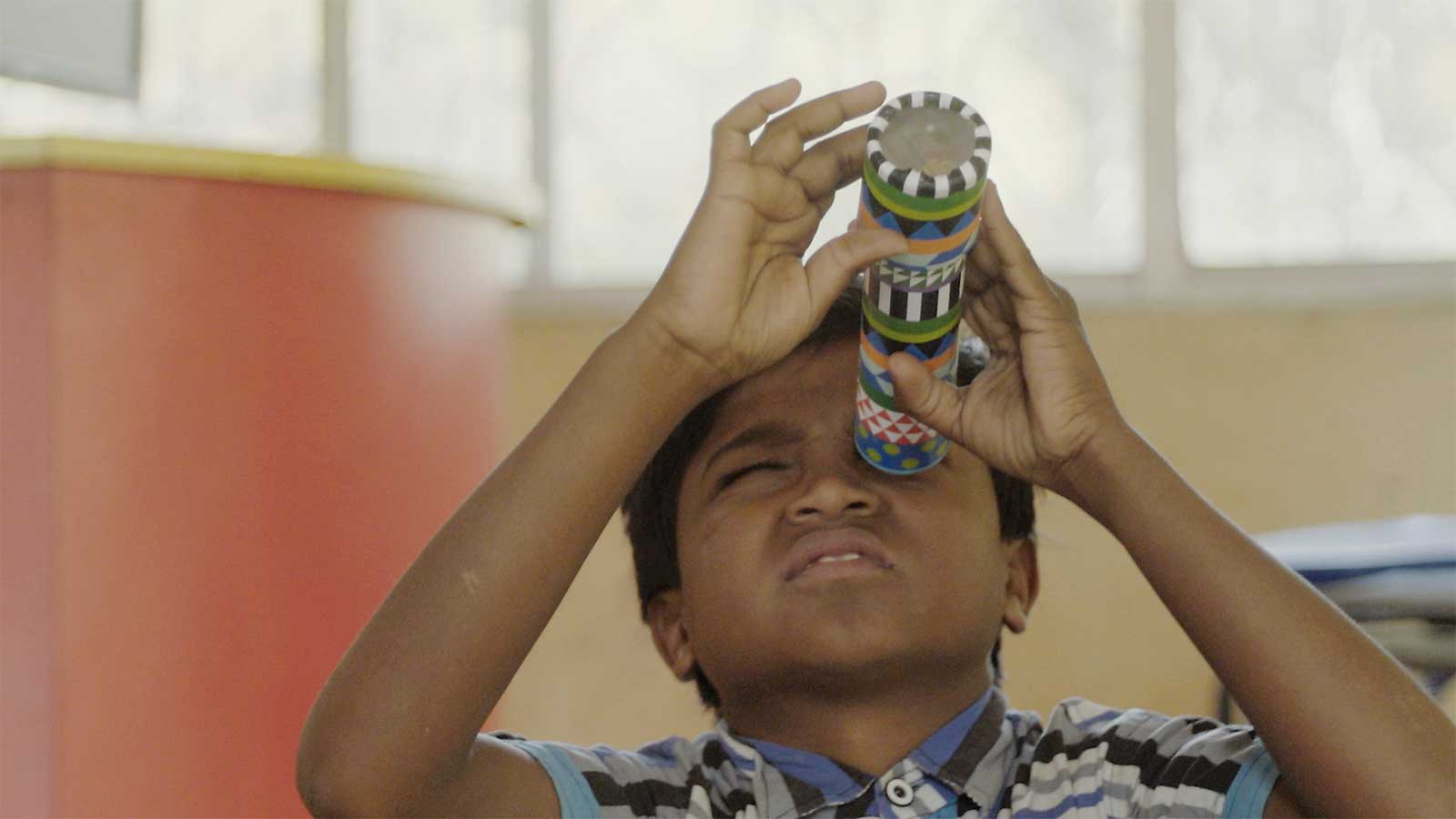
Dir: Jerry Rothwell | Doc | 85′
“Do not limit children to your own learning for they were born in anther time” Rabindranath Tagore
What is the future of education in a networked world? With the words of Tagore ringing in his ears, TED Prize-winning scientist Sugata Mitra installs an unmanned Internet kiosk in a remote Bengali village to pioneer “The School in the Cloud”. As children encounter the Internet for the first time, will they be able to use it to transform their futures? Award-winning documentarian Jerry Rothwell decided to find out in his latest film The School in the Cloud which examines the ups and downs of Sugata Mitra’s pioneering cloud-based educational model, as the leap from theory to practice proves to be its own fascinating learning curve, both in the developing and the developed world.
Three years in the making – in India and the North East of England – director Jerry Rothwell (How to Change the World/Sour Grapes) explores the challenges of bringing the Professor Mitra’s vision of giving the next generation the opportunity to create a better and more informed existence for itself. If he’s successful, education will never be the same again. In his tweed suit, shirt and tie, Professor Mitra comes across as a kind and approachable presence. He began his self-organised learning experiments in 1999, when he knocked a hole in the wall of his office in Delhi, India, into a nearby slum and placed an Internet-ready computer there (that went on to become the Hole in the Wall experiment). Some of the children have never had access to the internet. His research had taught him that if children’s minds are allowed to wander in a chaotic fashion, they will crystallise around big ideas. And the experiment was a big success, initially. Children flocked to the computer and taught themselves how to use it. But Sugata wasn’t satisfied with that – he wanted them to be able to pass the same tests as children in private education. By introducing an adult into the mix who offered support and encouragement in much the same way a grandmother does, he found his answer. Both in India and in England, where children are already digital natives, this access to self-learning turns out to be able to change everything. The Indian system of learning tends to focus on stricter right/wrong answers, whereas British children are allowed to be more creative and playful at school. Rothwell’s film is a portrait of an idealist at work, and of an idea that can potentially create positive change for millions of children. But Mitra also has his (British) detractors who make negative comments about the difference in theory and practice of his idea. They talk of “educational colonialism” and “parachuting shiny objects into developing countries, and then hoping for the best”. But Rothwell the first recipient of the Sundance Institute/TED Prize Filmmaker Award in 2013 counters these naysayers: “Mitra is often accused of naivety about the way children learn, but I think the power of his ideas – even if they are utopian – is in challenging education systems that have failed to acknowledge how the internet has changed the world,” says Jerry, “During the film we see both the difficulties of implementing his ideas of self-organised learning environments in remote locations, and their potential for children itching to explore the world.” The children design their own ideal classroom.
Rothwell’s film is enriched by its widescreen footage of the Sunderbans scenery in the local villages of Korakati and Gurjala and and by the children themselves, both in the UK and India, who share their excitement, ideas and lively observations which bring fresh insight into the learning process. The School in the Cloud is a portrait of a positive idealist at work, and of an idea that can potentially create positive change for millions of children. MT
WARSAW FILM FESTIVAL 2018 | 12-21 OCTOBER 2018 | Then at BERTHA DOCHOUSE | FROM 19 OCTOBER 2018 | Q&A with the director on the opening night | International screenings